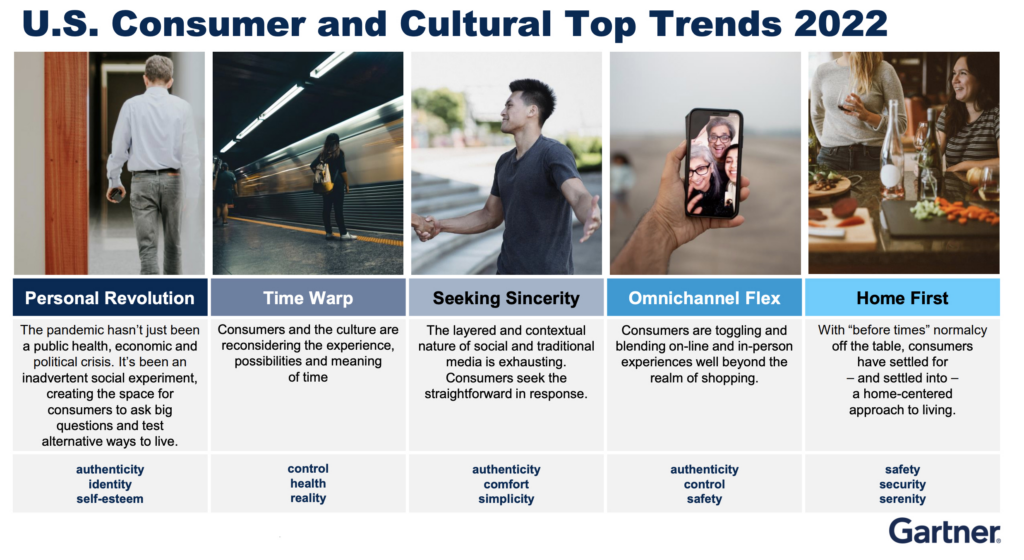U.S. consumers are increasingly comfortable with digital communication channels and are looking for ways to blend them with real-world experiences. That combination of “omnichannel flex” is one of five key trends outlined in a recent Gartner webinar, “Top U.S. Consumer and Cultural Trends for 2022.”
As Kate Muhl, vice president-analyst, Gartner explained, “Enterprises need to continue to invest in customer touchpoints and offerings where digital can enhance in-person experiences and vice versa. Consumers are looking for choices and digital is an important part of the tool kit.”
Referring to the importance of omnichannel communications, Muhl said COVID forced everyone to learn how to use digital platforms in new ways. Now, consumers are getting acclimated to virtual connections. “Our survey found that for many consumers digital experiences could be an adequate replacement for real life,” she said. “Now, consumers are looking for more ways to see how these platforms can improve their lives.”
Organizations should continue to invest in customer touchpoints and offerings that allow for hybrid online and in-person modes of interaction and choice,” she said. “Differentiate your brand by positioning omnichannel options as a path to comfort as well as a way to gain security and exercise control.”

Putting home first
Muhl noted that the psychological impact of COVID-19 will continue in 2022, as consumers and organizations wrestle with ongoing uncertainties: Will the pandemic finally come to an end? Will the COVID become an endemic condition like the flu virus? Will consumers become more comfortable with in-person experiences or will they prefer to stay at home and connect online?
In fact, “home first” was another of the five top Gartner trends. “For many people, the outside world is seen as a place of conflict and turmoil, she said. “As one of our survey participants said, ‘It’s different when you go out now. Businesses are understaffed and people not following health and safety rules and regulations.”
In the coming year, organizations should be prepared to help consumers who are engaging in a cost-benefit analysis about In-home and out-of-home experiences, Muhl said. “Continue to develop product offerings and buying channels that align with a home-first lifestyle, she added. “Emphasize values that speak to consumers’ emphasis on safety, security and serenity.”
Work-life balance
A third Gartner consumer trend was “personal revolution,” as more employees are rebalancing their relationships with work. Muhl said August 2021 saw the highest employee quit rate in the firm’s survey history. “Many organizations are reaching out to remote workers to try to maintain those personal connections, and that’s a positive trend,” she said. “However, we also found that many employees are trying to build a wall of protection around their personal life and protect it from work life.”
Muhl added that organizations should recognize that consumers are in the midst of a practical and spiritual overhaul that may be more exhausting than exciting. “Brands have an opportunity to be facilitators as well as cheerleaders of change,” she said. “Emphasize values that speak to authenticity, identity and self-esteem.”
A fourth Gartner trend was “time warp,” as a majority of US consumers reported a distortion in how they perceived time during the pandemic. Some people felt time went faster, while others believed it was slower than before. “Day-to-day life in this phase of the pandemic may seem to be stabilizing, but the fluidity and modularity of time continues to tire and inspire consumers,” she said. “Remember that your cadence and theirs may not be the same.”
The last Gartner trend was “seeking sincerity,” as a majority of consumers say they have prioritized nurturing relationships with close friends and families. “This is more about reducing mental load than increasing emotional engagement or intimacy,” Muhl said. “So, simplify your messages, spell out the processes and streamline the customer journey.”
